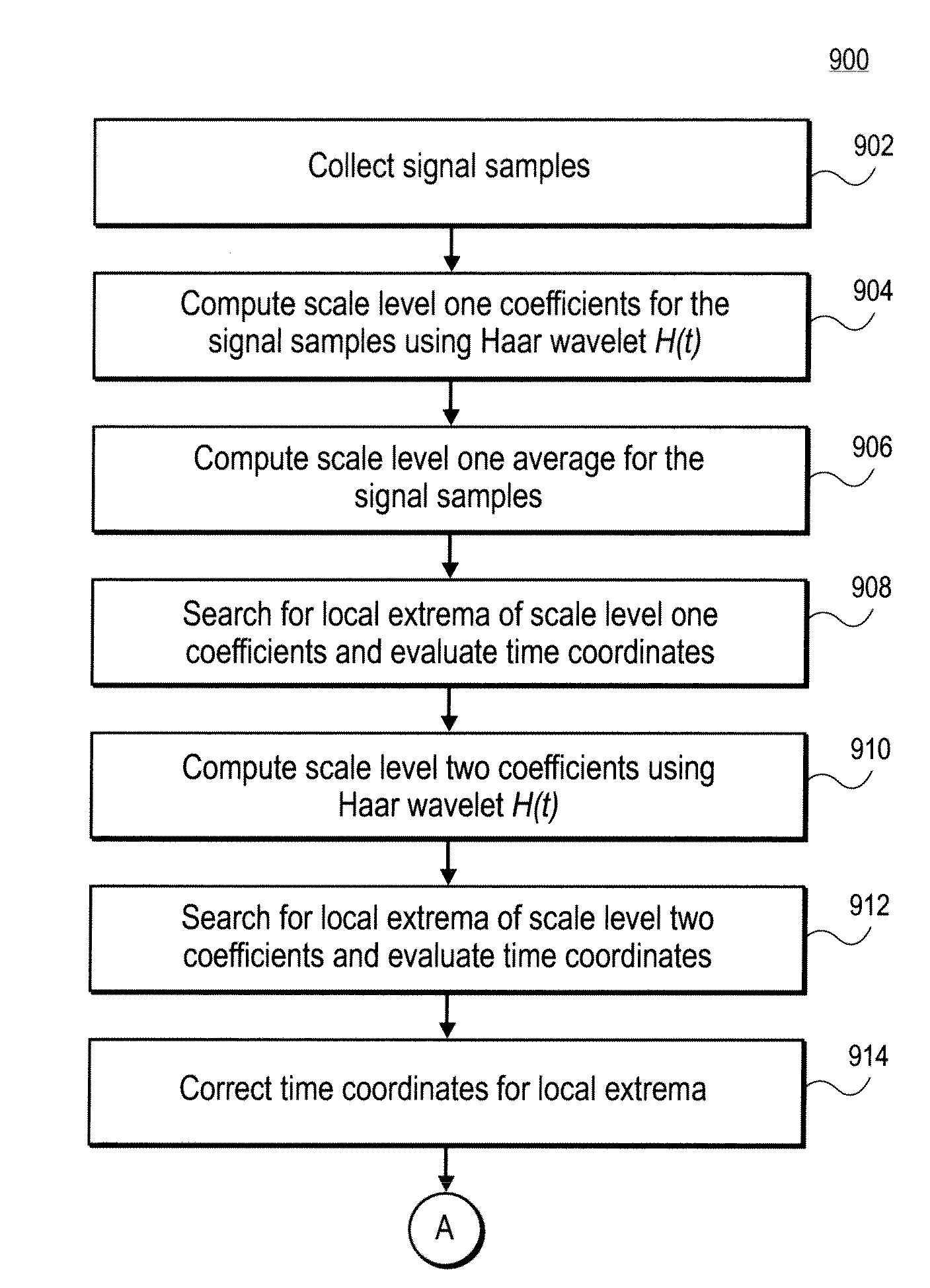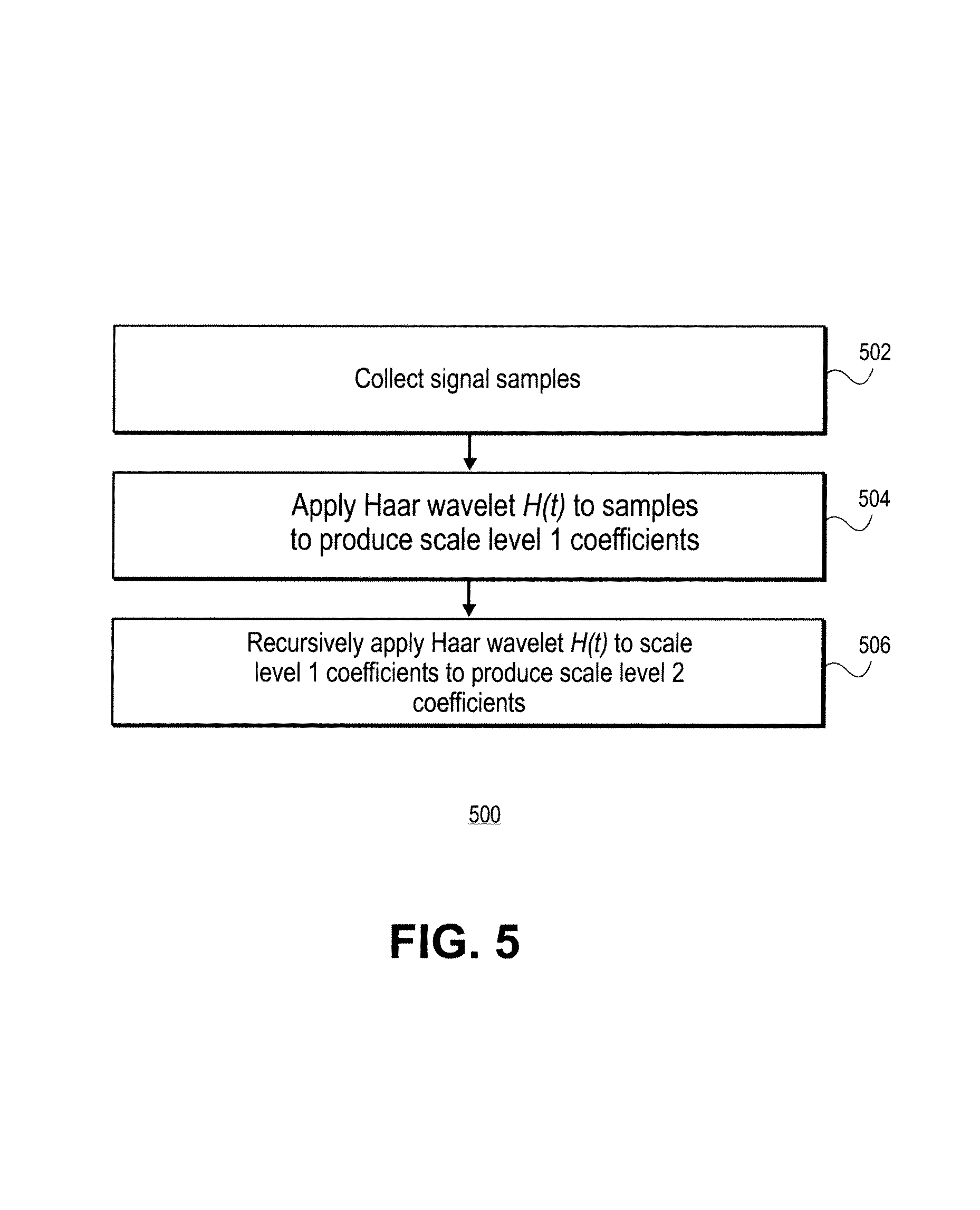Characterization of radio frequency (RF) signals using wavelet-based parameter extraction
a radio frequency and parameter extraction technology, applied in the field of system testing, can solve problems such as troublesome, limited ber testing, and difficult measurement of parameters in these systems, which have clocks and data transmission rates in the gigahertz (ghz) rang
- Summary
- Abstract
- Description
- Claims
- Application Information
AI Technical Summary
Problems solved by technology
Method used
Image
Examples
Embodiment Construction
[0032]Embodiments of the present invention apply wavelets to radio frequency (RF) signals such as telecommunication serial data streams and computer clock signals to extract specific characteristics (e.g., jitter, phase variations, frequency variations) so that their timing, phase, and frequency components can be characterized. In one embodiment of the present invention, a Haar wavelet is used to extract timing components from a clock signal. In another embodiment of the present invention, a Morlet wavelet is used to extract phase components from a radio frequency (RF) signal. In still another embodiment, a Morlet wavelet is used to extract frequency components of an RF signal.
[0033]FIG. 1 is a graphical representation 100 of a signal under test V(t) according to an embodiment of the present invention. The “x” axis represents time and the “y” axis represents voltage. In one embodiment, the signal under test V(t) is a clock signal, such as that found in a computer system. Of course, ...
PUM
 Login to View More
Login to View More Abstract
Description
Claims
Application Information
 Login to View More
Login to View More - R&D
- Intellectual Property
- Life Sciences
- Materials
- Tech Scout
- Unparalleled Data Quality
- Higher Quality Content
- 60% Fewer Hallucinations
Browse by: Latest US Patents, China's latest patents, Technical Efficacy Thesaurus, Application Domain, Technology Topic, Popular Technical Reports.
© 2025 PatSnap. All rights reserved.Legal|Privacy policy|Modern Slavery Act Transparency Statement|Sitemap|About US| Contact US: help@patsnap.com



